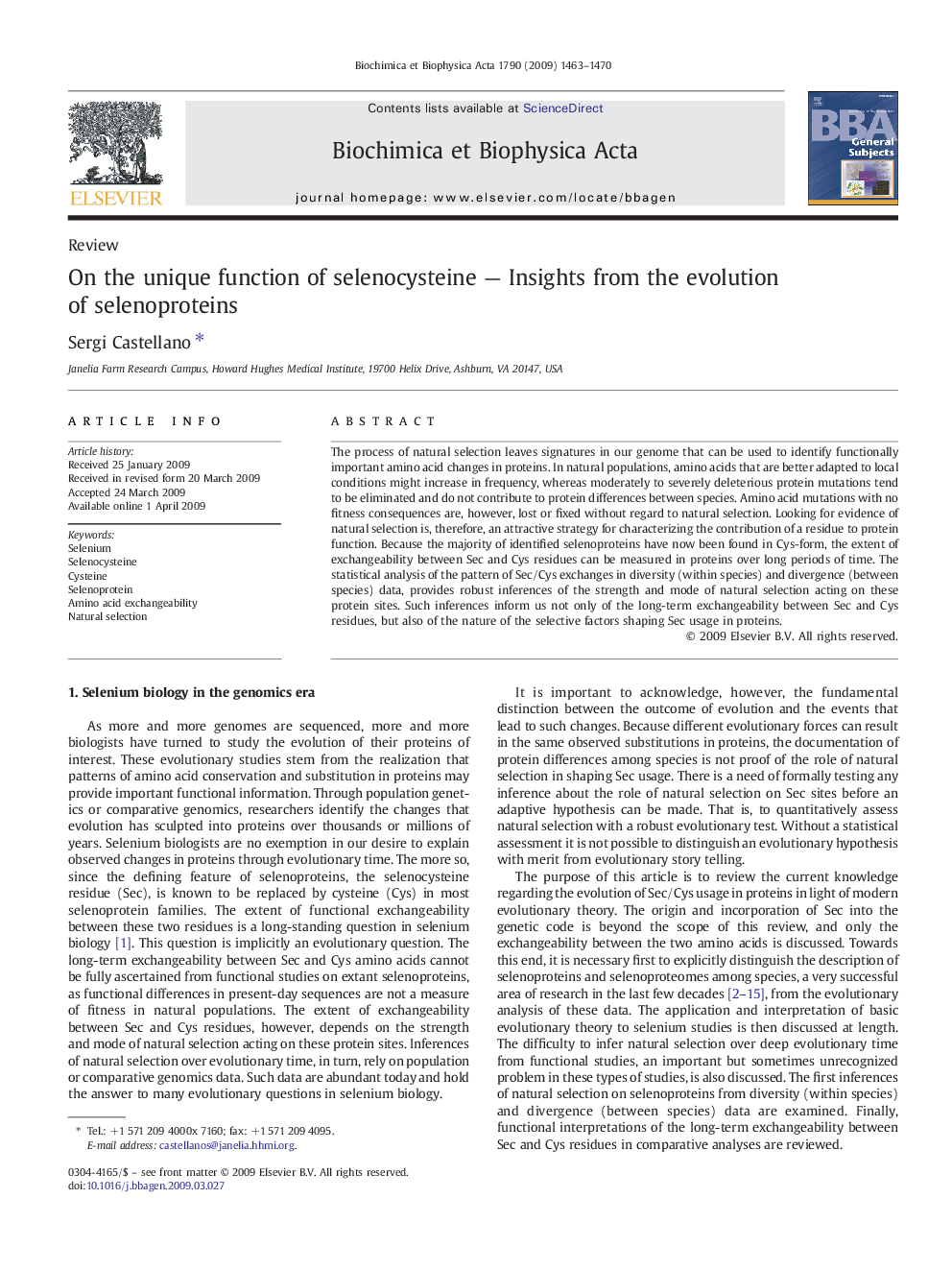| Article ID | Journal | Published Year | Pages | File Type |
|---|---|---|---|---|
| 1948260 | Biochimica et Biophysica Acta (BBA) - General Subjects | 2009 | 8 Pages |
The process of natural selection leaves signatures in our genome that can be used to identify functionally important amino acid changes in proteins. In natural populations, amino acids that are better adapted to local conditions might increase in frequency, whereas moderately to severely deleterious protein mutations tend to be eliminated and do not contribute to protein differences between species. Amino acid mutations with no fitness consequences are, however, lost or fixed without regard to natural selection. Looking for evidence of natural selection is, therefore, an attractive strategy for characterizing the contribution of a residue to protein function. Because the majority of identified selenoproteins have now been found in Cys-form, the extent of exchangeability between Sec and Cys residues can be measured in proteins over long periods of time. The statistical analysis of the pattern of Sec/Cys exchanges in diversity (within species) and divergence (between species) data, provides robust inferences of the strength and mode of natural selection acting on these protein sites. Such inferences inform us not only of the long-term exchangeability between Sec and Cys residues, but also of the nature of the selective factors shaping Sec usage in proteins.
